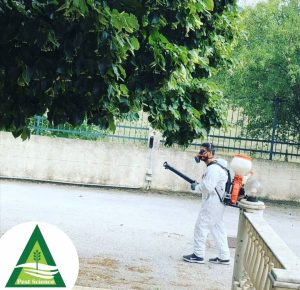Artificial Intelligence in Pest Prediction
Predictive Pest Modeling
The future of Pest Science lies in the integration of cutting-edge technologies, and artificial intelligence (AI) stands at the forefront. Predictive pest modeling utilizes AI algorithms to analyze vast datasets, predict pest outbreaks, and recommend proactive measures. This forward-thinking approach απολυμανσεισ ensures a preemptive response, reducing the impact of pests on diverse ecosystems.
Smart Pest Monitoring Devices
Say goodbye to traditional pest monitoring methods. The future envisions smart pest monitoring devices, equipped with sensors and AI capabilities. These devices provide real-time data on pest activity, allowing for immediate and targeted interventions. The era of proactive and precise pest control is on the horizon, revolutionizing how we safeguard our surroundings.
Quantum Leap in Pest Genetics
Precision Gene Editing for Pest Control
Embracing the future means delving into the realm of quantum advancements in pest genetics. Precision gene editing techniques, such as CRISPR-Cas9, are harnessed to modify pest DNA selectively. This targeted genetic approach holds the promise of creating pest-resistant species, minimizing the need for traditional chemical interventions and fostering sustainable pest management.
Genetic Barriers Against Pest Proliferation
Imagine introducing genetic barriers within pest populations to impede their proliferation. Pest Science’s future involves deploying genetically modified organisms with specific traits that limit reproduction. This innovative strategy ensures a natural and self-sustaining method of controlling pest populations without resorting to environmentally harmful chemicals.
IoT-Driven Precision Agriculture
Connected Farms for Optimal Pest Management
The future of agriculture converges with Pest Science through IoT-driven precision agriculture. Connected farms utilize sensors, drones, and smart devices to gather real-time data on crop health and pest activity. This data-driven approach enables farmers to optimize pest management strategies, minimizing resource use and maximizing crop yield in an eco-friendly manner.
Robotic Pest Control
Picture a future where robotic devices autonomously patrol fields, targeting pests with surgical precision. Robotic pest control is poised to become a reality, minimizing the environmental impact associated with traditional pesticide applications. These advanced technologies herald a new era where pest management is efficient, targeted, and sustainable.
Green Architecture for Pest Resistance
Integration of Pest-Resistant Materials
The future sees the integration of green architecture for pest resistance in building design. Pest-resistant materials, inspired by natural defenses found in plants and animals, create structures inherently resilient to pest intrusion. This proactive approach aligns with sustainable construction practices, redefining how we build spaces that coexist harmoniously with nature.
Living Green Roofs as Pest Habitats
Green roofs, adorned with thriving plant life, are reimagined as living green roofs that serve a dual purpose. These green havens act as natural habitats for beneficial insects, creating a balanced ecosystem that naturally suppresses pest populations. The integration of living green roofs exemplifies a futuristic approach to urban planning with Pest Science at its core.
Conclusion: Embracing the Evolution of Pest Science
As we step into the future, Pest Science becomes a beacon of innovation, paving the way for sustainable and technologically advanced solutions. From AI-driven predictive modeling to quantum leaps in pest genetics, and from IoT-powered precision agriculture to green architecture redefining our spaces, the evolution of Pest Science promises a future where coexistence with pests is not a challenge but a harmonious reality.

